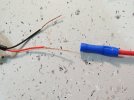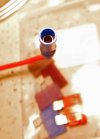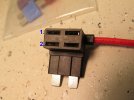sftl97
Member
- Joined
- Mar 3, 2015
- Messages
- 52
- Reaction score
- 22
- Location
- Riverview, Fl
- Country
- United States
- Dash Cam
- SG9665GC (2)
yes we're working on a couple of things, once we have that ready Jon will be in touch to arrange to replace some things for you, still a couple of weeks away at least at this stage
just on that you prefer a hardwire solution or cig plug?
Actually I would prefer the hardwire solution. But I'd like something where I can plug both GC's through one converter. I realize this would probably require one 15' cable to allow for routing to the rear mounted GC.
Thanks
Fred




